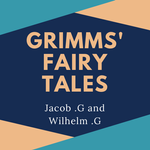
Una colección de cuentos de hadas de los hermanos Grimm, Jacob y Wilhelm.
advertisement
| Nombre | Grimms |
|---|---|
| Versión | 1.0.0 |
| Actualizar | 03 de 05 de 2021 |
| Tamaño | 4 MB |
| Categoría | Libros y obras de consulta |
| Descargas | 50+ |
| Desarrollador | Public Domain Books |
| Android OS | Android 4.4+ |
| Google Play ID | apps.webbooks.grimms_fairy_tales |
Grimms · Descripción
Jacob and Wilhelm Grimm, commonly known as the Brothers Grimm, were not primarily writers but philologists whose names are still as well known in the field of linguistics as they are to readers of fairy tales. Grimm’s Law is a basic rule in the study of Indo-European languages, and the dictionary of the German language is largely their work. Although the fairy tales were always intended to be read by children, they were also meant to represent German culture at its most fundamental level. The Grimms thought that culture at the level of the common people exists in its purest form and is the least influenced by foreign traditions.
During the late eighteenth century, after centuries of cultural stagnation, Germany experienced a cultural renaissance, which brought with it a pride in all things German. The fairy tales were the Grimms’ contribution to that flowering. Theirs remains one of the largest, and certainly the most famous, of national collections. Among the best-known stories are “Hansel and Gretel,” “Snow White,” “The Golden Goose,” “The Goose Girl,” “Rumplestiltskin,” “The Frog Prince,” “The Juniper Tree,” and “Snow White and Rose Red,” and these and many others have become the unquestioned property of childhood in the Western world. In many instances, popular children’s books quickly become dated or are crowded into the background by more recent books, but Grimm’s Fairy Tales remains as popular as when it was first published. New editions of single stories or of the whole collection continue to appear every year.
The term fairy tale is used both for children’s stories that have been created and transmitted orally and for literary stories such as those by Hans Christian Andersen, which imitate the folktale form. The stories of the Brothers Grimm are genuine folktales and as such have certain characteristics. They are inevitably short, they involve obvious parallels and repetitions in structure and language, descriptions are brief and stylized, characters are obvious stereotypes, the setting in place and time is usually vague and generalized, animals can talk, and magic is commonplace. Because they are so stylized, very little practice is needed to learn to tell any folktale effectively. The Grimms refined the language of the stories extensively in the course of the seven editions that were published in their lifetimes, but the fact that the stories remain highly tellable shows their essentially oral nature.
During the late eighteenth century, after centuries of cultural stagnation, Germany experienced a cultural renaissance, which brought with it a pride in all things German. The fairy tales were the Grimms’ contribution to that flowering. Theirs remains one of the largest, and certainly the most famous, of national collections. Among the best-known stories are “Hansel and Gretel,” “Snow White,” “The Golden Goose,” “The Goose Girl,” “Rumplestiltskin,” “The Frog Prince,” “The Juniper Tree,” and “Snow White and Rose Red,” and these and many others have become the unquestioned property of childhood in the Western world. In many instances, popular children’s books quickly become dated or are crowded into the background by more recent books, but Grimm’s Fairy Tales remains as popular as when it was first published. New editions of single stories or of the whole collection continue to appear every year.
The term fairy tale is used both for children’s stories that have been created and transmitted orally and for literary stories such as those by Hans Christian Andersen, which imitate the folktale form. The stories of the Brothers Grimm are genuine folktales and as such have certain characteristics. They are inevitably short, they involve obvious parallels and repetitions in structure and language, descriptions are brief and stylized, characters are obvious stereotypes, the setting in place and time is usually vague and generalized, animals can talk, and magic is commonplace. Because they are so stylized, very little practice is needed to learn to tell any folktale effectively. The Grimms refined the language of the stories extensively in the course of the seven editions that were published in their lifetimes, but the fact that the stories remain highly tellable shows their essentially oral nature.




